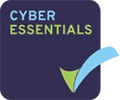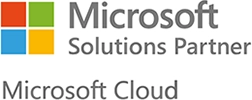The zero trust security model, also known as zero trust architecture (ZTA), is a security model that does not trust any user or device, even those that are connected to the network or corporate LAN. This can be summarised in the key principle of zero trust which is “never trust, always verify”.
The zero trust security model requires strong identity verification, validates device compliance before allowing any access, and ensures least privilege access to resources.
The Key Principles of Zero Trust
Going into further detail of those core principles of the zero trust model, they are:
Verify Explicitly
ZTA systems must always authenticate and authorize based on all available data points, such as user identity, location, device health, and anomalies. This involves continuous verification of user and device identities.
Use Least Privilege Access
User access must be limited to only what is necessary for their roles, applying just-in-time (JIT) and just-enough-access (JEA) principles. This approach reduces the risk of unauthorized access and minimizes potential damage from breaches.
Assume Breach
Systems using zero trust architecture are designed with the assumption that a breach could occur. This involves minimizing the “blast radius” of any attacks by segmenting access and ensuring end-to-end encryption. Real-time analytics are used to detect and respond to threats.
As you can see the zero trust approach to IT security is particularly strict.
The Practical Benefits of Zero Trust Security for SMEs
The zero trust security model is just part of a larger cybersecurity strategy that can include your email and general IT security. Zero trust can be applied to data access and management by ensuring every request to access data is authenticated and has least privileged access. Additionally, a full ZTA solution includes enhanced identity governance and policy-based access controls, micro-segmentation, and overlay networks or software-defined perimeters.
The Zero Trust model is particularly beneficial in environments with remote work, cloud services, and complex IT infrastructures. ZTA helps prevent data breaches, supports secure remote work, and provides controlled access to cloud and multi-cloud environments. Organisations that adopt Zero Trust can better protect against sophisticated cyber threats by ensuring that every access request is authenticated, authorized, and encrypted, thus significantly reducing the risk of unauthorized access.
Zero Trust Implementation and Technologies
Zero trust architecture incorporates several technologies and strategies, including:
Identity and Access Management (IAM)
IAM is the management of user identities and access rights, ensuring compliance with security policies
Multi-factor Authentication (MFA)
Beyond basic 2FA, multifactor authentication requires more than one form of verification to access systems, enhancing security beyond simple password protection.
Microsegmentation
The use of microsegmetation divides your network into smaller, isolated segments to prevent lateral movement by attackers.
Continuous Monitoring
Regularly checking the security posture of devices and users, continuous monitoring ensures compliance with security policies before granting access to users.
Attribute-Based Access Control (ABAC)
The attribute-based access control approach grants access based on user attributes and data characteristics, ensuring dynamic and context-aware authorization.
Secure Access Service Edge (SASE)
Integrates network security functions with wide area networking (WAN) capabilities to support secure access to applications and data.
Zero Trust Network Access (ZTNA)
Provides secure remote access to applications without exposing them to the internet, reducing the attack surface.
Network Access Control (NAC) Systems
Monitor and control who and what can access the network, ensuring that only authorized users and devices are allowed.
Implementing a zero trust security model, you will need to identify critical assets, data, applications, and services. Segmenting your network, as mentioned above, will prevent lateral movement from any potential attackers.
Alongside strong authentication and policy enforcement, you will then need to carry out the continuous monitoring and threat detection.
Zero Trust Summary
As a provider of IT support to local businesses, PurpleJelly has many years of practical experience in IT security, cybersecurity, and email security. Whatever IT support you require, we build zero trust into every IT security solution. We can even help your company achieve levels of security through Cyber Essentials and Cyber Essentials Plus certification.
For any queries you may have about your IT support and security needs, and how our company can assist you, then call PurpleJelly on 01252 856 230 or complete the contact form.



